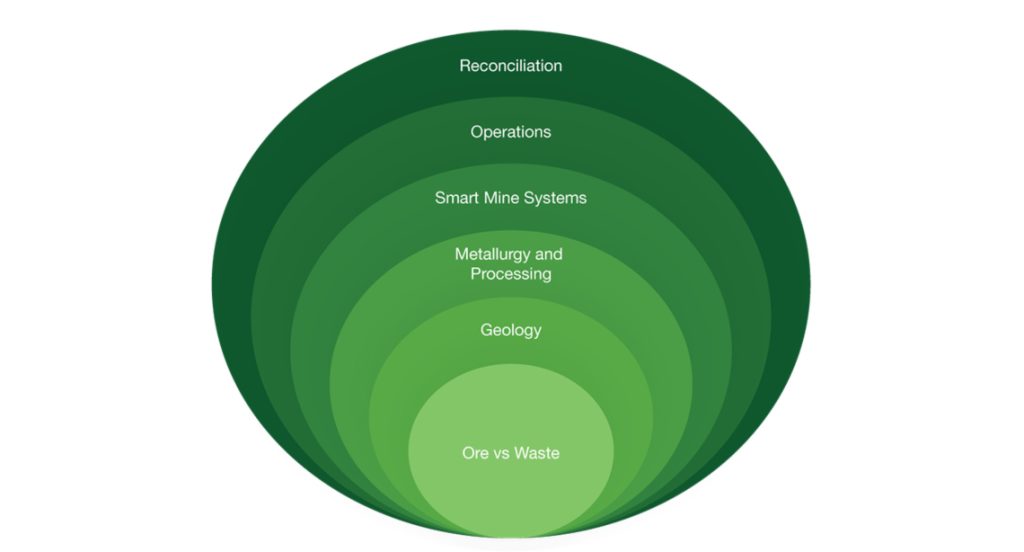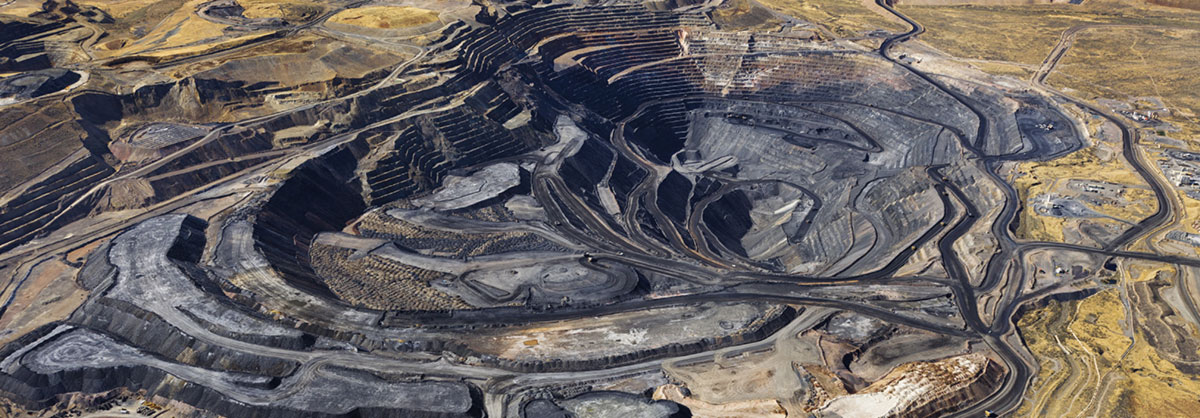June 2023 Issue Index
Decisions at all layers of ore control
Peeling back the layers of ore control exposes a complex interplay of considerations that reveal the importance of this process for decision making in mine planning.
Implementing an effective ore control system at a mine site will ultimately determine the productivity and profitability of the operation. Decisions made at each stage affect every other stage.
The central consideration is whether we are mining ore or waste. Material designation defines what’s going to make money versus what’s going to cost money. Everything passes through grade control.

Surrounding the ore/waste layer are the complexities of geology and lithology domains, where every rock type has different characteristics that can influence your control. The metallurgy and processing of the material also play a big role in what is considered ore and what is considered waste.
Another layer of complexity involves the mine systems that the ore control system has to either fit into or feed. Operational decisions include how planning for ore control impacts extraction method and material movement.
Ore control also plays a huge part in the broader reconciliation processes, which occur throughout the mining lifecycle.
Ore vs waste?
At the heart of the matter is how material is designated, given that classification relies on data from various sources. Mine planning engineers need to consider the source, validation and organisation of this data. Material may have been classified by holes/samples or by block models. Cutoff grades are determined based on different premises. Looking at expected revenue, cut off grades could be determined on different cost and dilution factors.
Maptek Vulcan Grade Control Optimiser is used to group and reclassify destinations at the block model level to meet minimum mining widths based on either economic value or material classifications.
Geology
Geology has a key impact on the ore control process. A model is built on the available data and particular interpretations of the geologist.
Factors such as frequency of model updates help determine confidence in the data used for production modelling. Deposits may be massive or narrow, and different dilution factors must be considered when predicting ore recovery.
Metallurgy & processing
Geochemistry and metallurgy that varies across a deposit can introduce a huge layer of complexity to the ore control process. What may appear very high grade material can be sterilised by contaminant or deleterious elements. Variable seasonal conditions and oxidisation of material due to time on stockpiles can result in handling issues and ore loss.
Overseers of ore control programs must ensure there is open communication between the ore control implementation and database managers. The way the information created by ore control is translated and communicated to the different mine systems is crucial for effective decision making.
Operations
GPS, fleet tracking and dispatch map printouts for survey, shovel operators and truck operators, must be kept in mind when designing an ore control system. Effective communication on the effect of blast movement on the grade block polygons is important.
Reconciliation
Reconciliation at every stage ensures a tight operation. At the mill, actual ore produced is reconciled against ore control predictions. Operationally, material dug must be balanced against material received.
Short range reconciliation reviews the mine plan against ore control, and resource model updates will be triggered as reserve predictions are reconciled. Importantly, the geological model must be evaluated against the geology that is actually encountered when mining.
Building integration into your ore control system from the start means that teams consuming the data can make educated decisions in their individual roles.
Based on a paper presented to SME 2023
- Ore control systems can have far reaching impact on mining processes from geology through metallurgy and processing to reconciliation
- Effective communication of ore control information across different mine systems is crucial for efficient extraction and material movement
- Operations should look to build in integration across teams and processes to ensure that informed decisions are made at every stage to derive maximum value from ore control

